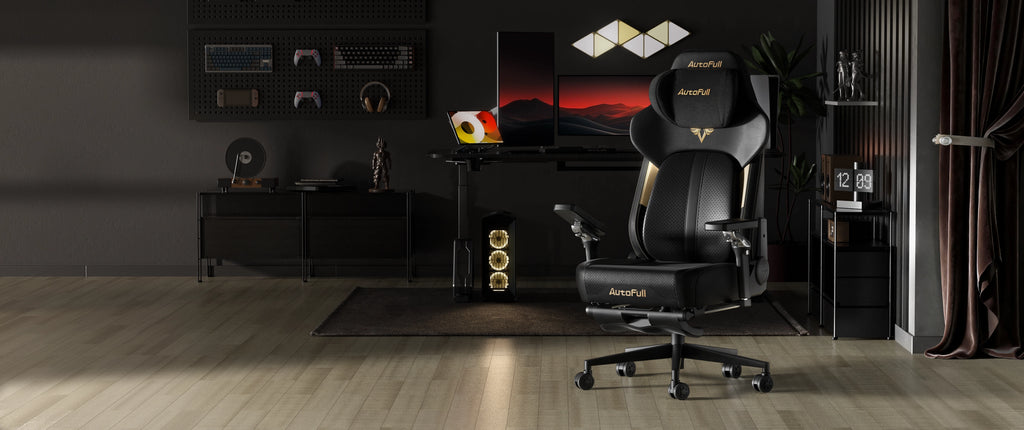Standing desks are gaining popularity as a solution to the negative health effects associated with prolonged sitting.Sales of standing desks have reportedly surpassed those of conventional desks, indicating a growing interest in this alternative workspace. While it may require more effort to stand rather than sit, there is speculation that this extra effort could lead to weight loss or avoidance of weight gain. Standing desks are an encouraging trend in workplace health and wellness. A recent study published in the Journal of Physical Activity and Health focused on calorie expenditure during sitting, standing, and walking on a treadmill. The results offer valuable insights for individuals seeking effective ways to burn calories and achieve weight loss or maintenance. According to the study, sitting burns approximately 80 calories per hour, comparable to activities like typing or watching TV.Standing burned slightly more calories, about 88 per hour. Walking on a treadmill burned 210 calories per hour. The study suggests that using a standing desk for three hours would only burn an extra 24 calories, while walking for just 30 minutes during lunch could burn an extra 100 calories each day. The findings contradict prior reports that suggested standing burned significantly more calories than sitting.
While standing desks may not directly contribute to weight loss or prevention of weight gain, they offer other potential benefits. Studies suggest that incorporating more standing time during the day can lead to faster blood sugar normalization after meals and may reduce the risk of shoulder and back pain. Many individuals have already adopted standing desks due to the associated health risks of prolonged sitting, including heart disease, obesity, and musculoskeletal issues. Regular exercise alone may not counteract these risks if excessive sitting persists. Using a standing desk allows you to adjust your computer to a suitable height for standing, promoting longer periods of standing throughout the day. Standing desks have gained popularity in recent years. Here are 9 advantages of using a standing desk:
1. Reduce Health Risks
To mitigate these risks, incorporating a standing desk into your daily routine can be beneficial. By interspersing periods of standing and movement throughout the workday, you can help regulate blood sugar and cholesterol levels, reducing the likelihood of developing heart disease.
Moreover, extended sitting increases the chances of developing conditions like type 2 diabetes and certain cancers, such as breast and colon cancer, regardless of regular exercise. Prioritizing an active lifestyle and minimizing sedentary behavior is crucial for better health outcomes. Thus, breaking up long periods of sitting with standing and walking can significantly decrease the risk of these health issues.
2. Reduces Back and Neck Pain
Sitting all day can cause stress on your spine and lead to back and neck pain. Bad posture can result from prolonged sitting and tilting your head down to view a monitor. The Take-a-Stand Project found that standing desks can improve posture and reduce lower back pain and shoulder tension. Additionally, participants reported increased comfort and mood. A standing desk can be a great solution for reducing neck and back pain caused by prolonged sitting.
3. Increases Energy and Improves Mood
Standing is an effective method to increase energy levels and enhance productivity.When you stand, your brain becomes more engaged, increasing your energy and preventing fatigue. Standing also promotes healthy blood flow, delivering more oxygen to your muscles and boosting your mood. By incorporating standing into your daily routine, you can stay focused on tasks and accomplish more throughout the day.
4. Increases Activity
Standing desks offer numerous benefits compared to sitting all day. By standing, you're able to move your arms and legs more, which can promote better circulation and muscle activation. Additionally, standing allows for more flexibility in incorporating additional activities like using standing mats, balance boards, treadmills, or exercise bikes. Although standing is healthier than sitting, adding more movement to your daily routine can bring even greater health benefits. Studies show that using a standing desk can help you burn more calories compared to prolonged sitting. It's essential to strike a balance between sitting, standing, and movement to optimize both your health and productivity levels. Finding this equilibrium allows you to experience the benefits of an active lifestyle.
5. May Increase Your Lifespan
Engaging in regular physical activity and reducing sedentary behavior have been associated with enhanced overall health, decreased chances of chronic ailments, and a longer lifespan.According to research from the American Cancer Society, an active lifestyle and limited sedentary time significantly lower the chances of mortality. These findings highlight the importance of staying active for promoting overall well-being and a longer life. By embracing an active lifestyle and reducing sedentary habits, individuals can actively reduce their mortality risk and enhance their overall health.
6. Ergonomics and Better Posture
Choosing to stand instead of sit at your desk can promote better posture and reduce stress on your spine, leading to less lower back and neck pain. However, it's important to practice proper ergonomics when standing to reap the full benefits. Learning how to sit and stand correctly at your new standing desk is key to achieving better posture and reducing strain on your spine.
7. Better Circulation
Standing desks provide several health advantages, such as better posture, enhanced calorie expenditure, and decreased susceptibility to obesity and cardiovascular issues.Another important benefit is improved circulation, which can prevent health issues such as swollen ankles, blood clots, peripheral neuropathy, and varicose veins. By incorporating standing, stretching, and walking breaks throughout the day, you can promote better circulation and overall health.
8. Standing may help lower your blood sugar levels
Standing can help lower blood sugar levels, which is beneficial for overall health. A study conducted by Arizona State University found that replacing sitting time with standing, slow walking, or slow cycling can reduce average blood sugar levels throughout the day. Participants were required to stand for two and a half hours, which is achievable for many with a standing desk. Standing after lunch has shown to be the most effective in reducing blood sugar levels. Therefore, incorporating standing into daily work routines with a standing desk can be a simple and effective way to improve health.
9. Standing may lower the risk of heart disease
Prolonged sitting hampers blood flow, resulting in the buildup of fatty acids in blood vessels and an elevated susceptibility to heart disease.
Standing desks allow you to work while standing up, and there are a few different types available. Fixed-height desks stay at one height, while sit-stand desks can be adjusted to allow you to sit or stand whenever you want. Power sit-stand desks can be adjusted with the push of a button, while manual ones require a handle or lever to be raised. Standing desks can be purchased online or at office supply, electronics, or big-box stores.
The price range for standing desks varies, with basic fixed-height desks costing less than $100 and high-end electric or treadmill desks priced at over $1,000. Standing desks have gained popularity due to their numerous benefits. However, it's essential to acknowledge that they can also present certain challenges. These include the possibility of leg and foot pain due to prolonged standing, which can exert pressure on the knees, hips, and feet. Shifting weight from one foot to another may be necessary to alleviate the pressure, potentially affecting posture.
-
- Vein problems: Standing for extended periods of time can cause blood to collect in your leg veins, which can lead to varicose veins. Prolonged standing for over 6 hours a day increases the likelihood of requiring surgical intervention for varicose veins.
-
- Standing doesn't replace exercise: While standing burns more calories than sitting, it's not a substitute for exercise. Walking is much more effective for burning calories and improving blood sugar and cholesterol levels.
-
- Not ideal for every task: Some tasks, like drawing and writing, may be easier to do while sitting. It's important to find a balance between standing and sitting to ensure maximum comfort and productivity.
While using a standing desk can have numerous health benefits, it's important to keep in mind that it should be approached gradually. Sudden and prolonged standing can lead to discomfort in the back, legs, or feet. Experts suggest starting with 30 to 60 minutes a day and gradually increasing standing time. Additionally, using timers to remind you to stand or sit may negatively impact your concentration, focus, efficiency, or creativity. Finding the optimal intervals for your needs requires experimentation. By trying out different intervals, you can discover what works best for you. It's important to personalize your approach and find the intervals that suit your specific requirements.



![🔥M6 Ultra 2.0 [New & Upgraded]](http://autofull.uk/cdn/shop/files/20251109-160932.jpg?v=1764059394&width=200)











![AutoFull M6 Ultra Gaming Chair & A4 Pro Gaming Desk Bundle [💥Combo Off]](http://autofull.uk/cdn/shop/files/20251109-150955.jpg?v=1762672572&width=200)
![AutoFull G7 Gaming Chair & A4 Pro Gaming Desk Bundle [💥Combo Off]](http://autofull.uk/cdn/shop/files/20251109-151002.jpg?v=1762672658&width=200)
![AutoFull A4 Pro RGB Gaming Desk [⚡Early Bird Pricing⚡]](http://autofull.uk/cdn/shop/files/img_v3_02si_dc125b92-da78-443a-8cf9-c7463fb8715g.webp?v=1764741789&width=200)
![🔥M6 Ultra 2.0 [New & Upgraded]](http://autofull.uk/cdn/shop/files/20251109-160932.jpg?v=1764059394&width=70)









![AutoFull A4 Pro RGB Gaming Desk [⚡Early Bird Pricing⚡]](http://autofull.uk/cdn/shop/files/img_v3_02si_dc125b92-da78-443a-8cf9-c7463fb8715g.webp?v=1764741789&width=70)
![AutoFull M6 Ultra Gaming Chair & A4 Pro Gaming Desk Bundle [💥Combo Off]](http://autofull.uk/cdn/shop/files/20251109-150955.jpg?v=1762672572&width=70)
![AutoFull G7 Gaming Chair & A4 Pro Gaming Desk Bundle [💥Combo Off]](http://autofull.uk/cdn/shop/files/20251109-151002.jpg?v=1762672658&width=70)




Leave a comment
This site is protected by hCaptcha and the hCaptcha Privacy Policy and Terms of Service apply.